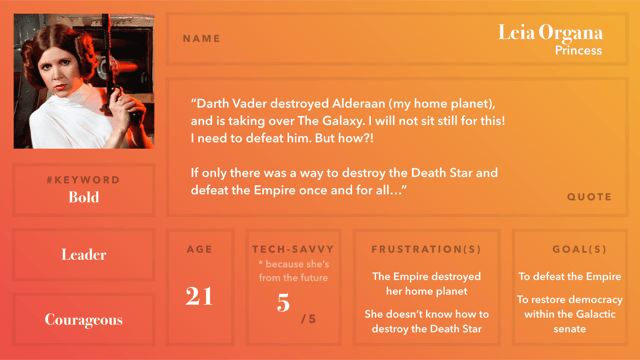User Profiles v User Personas For App Marketing
Think back to your last good conversation with someone you have known for your entire life. Now compare it with talking to someone you have just met… it was easier and frankly more enjoyable chatting to your buddy because you knew them, right?
This feeling of comfort through communication is one that you want to replicate.
Naturally, you want it to be enjoyable for both you and the user when communicating. We are all humans at the end of the day. Top tip - REMEMBER THAT! Therefore, a great way to make this process easier is through creating user profiles and user personas.
So where do you start? Well, Ray Jones from CIM makes a the point that it is to find out as much as you can about existing customers. Knowing this information will contribute to both your profiles & personas.
User profiles and user personas both provide information about your user that can be used to inform you when designing your app marketing. Therefore, in order to be effective, user research should be conducted on both user personas and profiles.
So what are they? Are profiles & personas not the same thing I hear you ask? And the answer is simple …
No!

It is a common and simple mistake to make but be sure not to get the two mixed up.
What Are User Profiles?
Profiles are made through collecting data about your app users, in order to piece together who they are and what they like, in the form of a profile. They are the representation of the users and they are the outcome of the user profiling process. The elements included in a user profile may include geographical location, academic and professional background, membership in groups, interests, preferences, opinions, etc. This type of data would be seen as descriptive, however, user profiling is improved by including statistical data gained from monitoring behavioural app data.
Through behavioural app data capture, you are flooded with vital statistics such as, how many times the user opens the app, how long they spend on the app and what features they access. This statistical data provides insight into how and why users turn to your app, allowing you to see where it fits in their life.
Profiles provide focus on your specific users, and what drives them as they interact with your brand. App marketing can be difficult at times but this data compiled into a user profile can prove to be very helpful if used correctly.
Profiles have become very important when app marketing, as it helps to achieve personalisation. You want to talk to your users to be like putting on an old pair of slippers - familiar, easy and personalised. This does not happen overnight! You have to put in the groundwork and commit time to effort to find out who your users are.
Creating profiles can be a timely process! Therefore, make the process as easy as possible by having the right tools. With the right tools, you can look at a user's full history of interactions with your brand and trigger targeted communications based on their actions to make the conversation seem personal but saving you time.
So What About User Personas?
As mentioned these are similar to the User Profile, however, not the same thing.
Where profiles are made up of real-life facts and figures the user persona is not. Yes, they are based on market research and real data but they are as stated by Hubspot ‘a semi-fictional representation of your ideal customer based on market research and real data about your existing customers. Personas focus on the why of customer behaviour, not the what. When creating personas you should include analysis of the user profiles, including identification of important clusters of users within or between user profiles.

Image credit: MELEWI
Think of profiles as stage 1 and personas as stage 2.
When to use them?
When marketing an app it is essential to know when is best to use each. You can see, they are based on different things but equally the use of each is very different too.
When to use profiles:
- When target marketing campaigns to users or find new users.
- To understand the statistical values and behaviours of each different type of user.
- When the broader picture is needed to create the plan
When to use personas to:
- To help construct your messaging.
- When advising members of your team on the motivations behind your users.
- When you are narrowing down the plan to create the communication and remember that you are talking to a fellow human!
Profiles are not a replacement for personas! In fact, despite their differences, there are benefits of using them together. Even though they may be based on the same user and market research, they provide different views of your users.
When app marketing, the best practice is to analyse the profiles and then create a targeted set of personas. When it comes to how many you should have - the answer is how long is a piece of string? It depends entirely on your brand, how many you should have but you could have as few as one or two personas, or as many as 10 or 20. Using both profiles and personas has armed you with a plethora of information on your users letting you speak their language.
Share this
You May Also Like
These Related Stories

How to Improve User Retention with User Profiling

8 Stages of the User Interaction Journey


